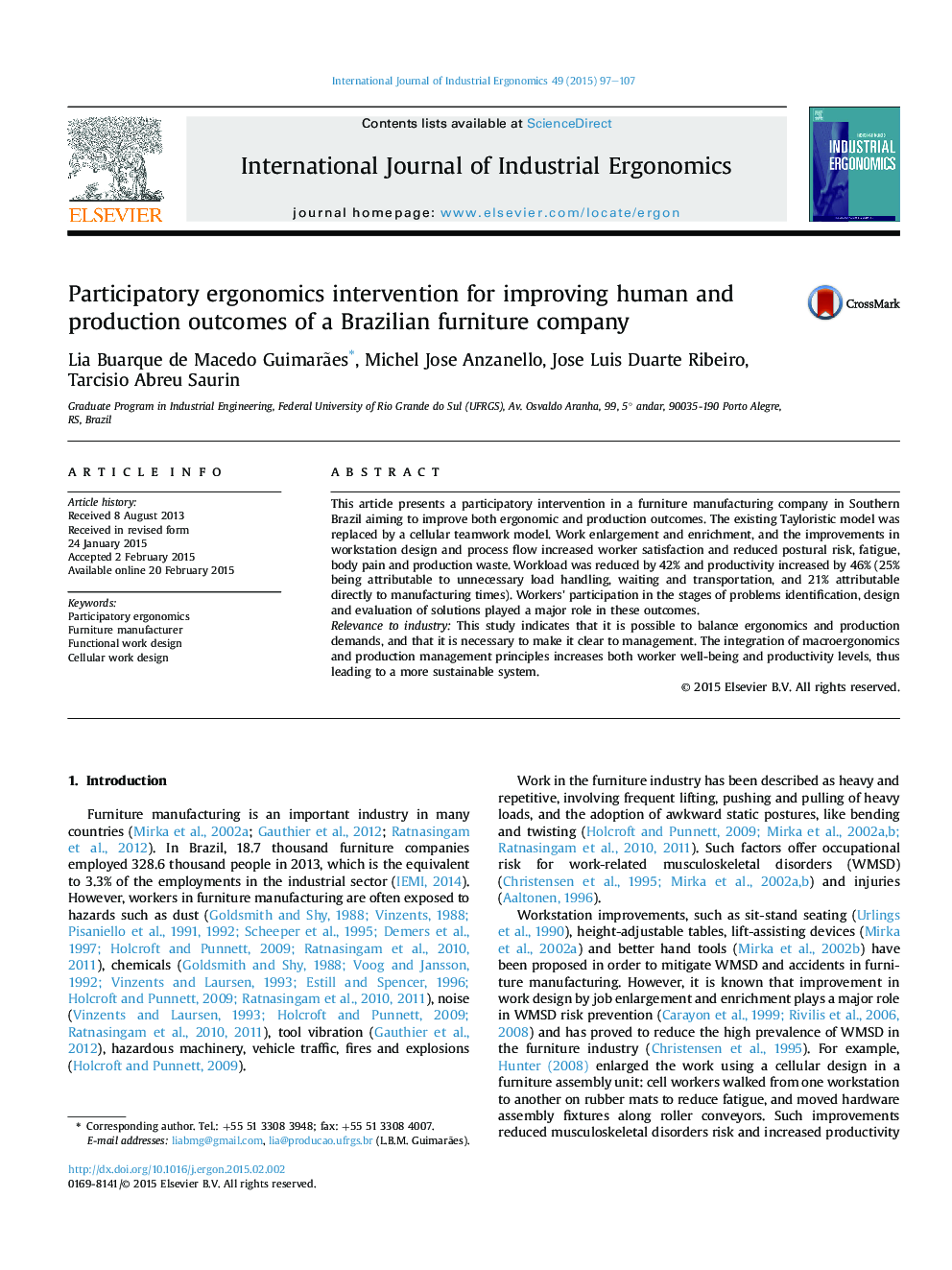| Article ID | Journal | Published Year | Pages | File Type |
|---|---|---|---|---|
| 1095955 | International Journal of Industrial Ergonomics | 2015 | 11 Pages |
•A participatory intervention in a furniture company reduced workload in 42%.•46% Productivity increase was a way to make managers accept ergonomic changes.•Unnecessary load handling, waiting and transportation increased productivity in 25%.•Reduction of manufacturing times increased productivity in 21%.•Workers participation is crucial for achieving better and faster intervention results.
This article presents a participatory intervention in a furniture manufacturing company in Southern Brazil aiming to improve both ergonomic and production outcomes. The existing Tayloristic model was replaced by a cellular teamwork model. Work enlargement and enrichment, and the improvements in workstation design and process flow increased worker satisfaction and reduced postural risk, fatigue, body pain and production waste. Workload was reduced by 42% and productivity increased by 46% (25% being attributable to unnecessary load handling, waiting and transportation, and 21% attributable directly to manufacturing times). Workers' participation in the stages of problems identification, design and evaluation of solutions played a major role in these outcomes.Relevance to industryThis study indicates that it is possible to balance ergonomics and production demands, and that it is necessary to make it clear to management. The integration of macroergonomics and production management principles increases both worker well-being and productivity levels, thus leading to a more sustainable system.
